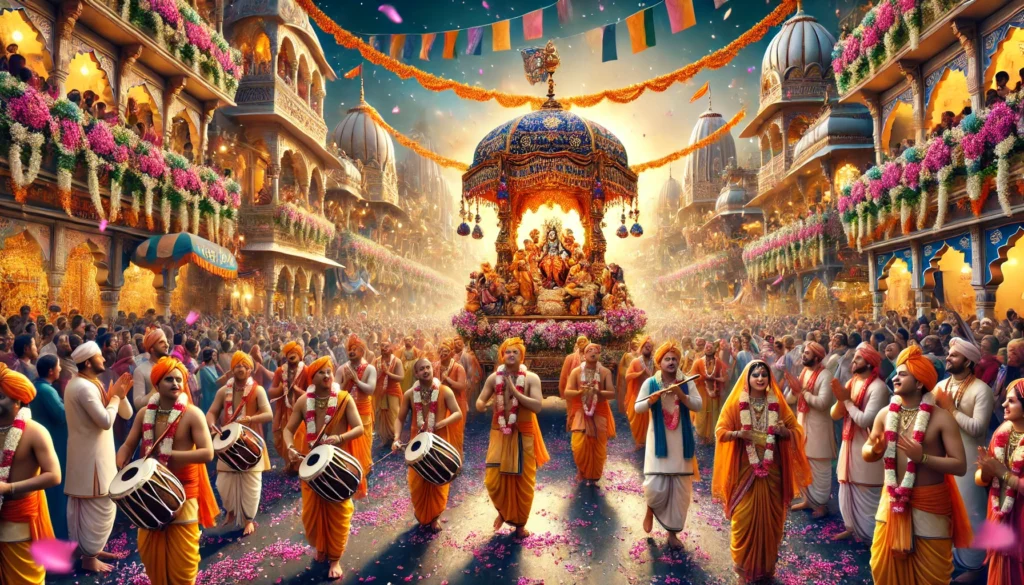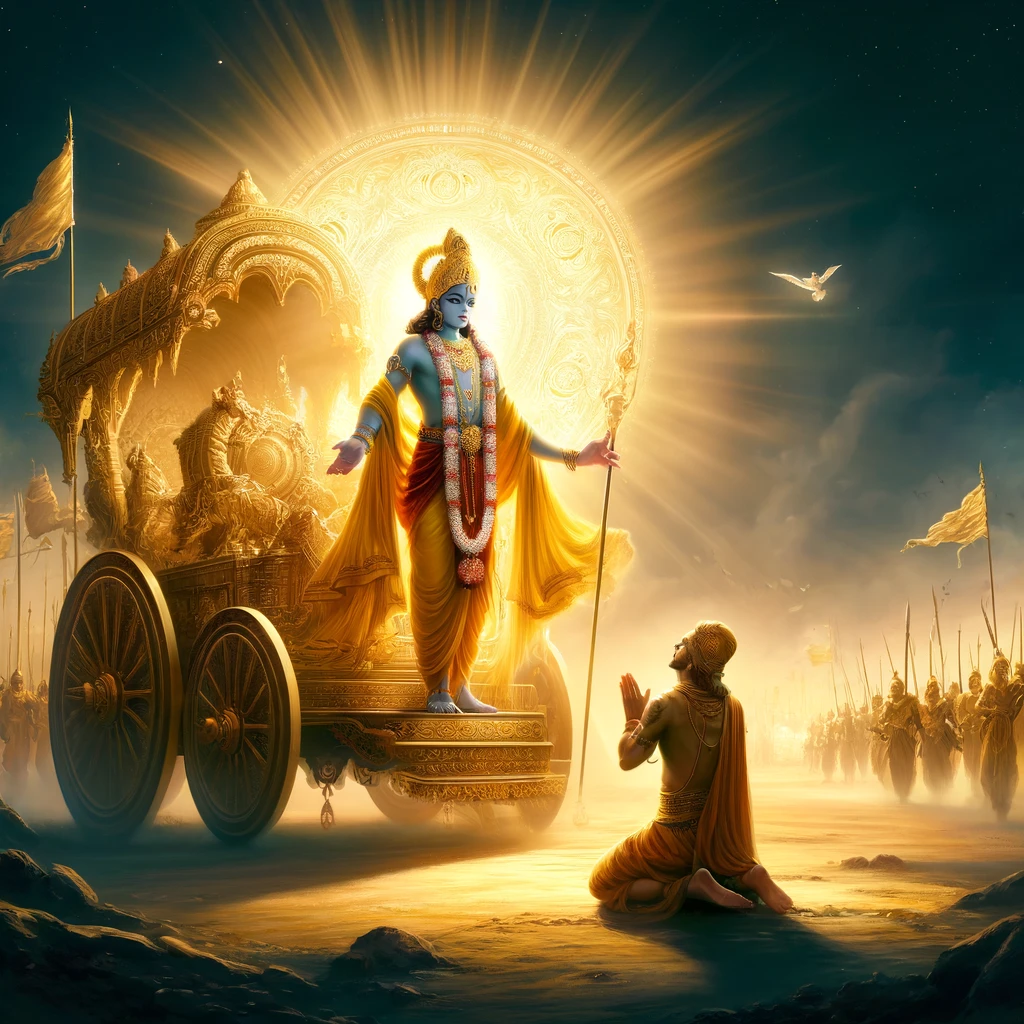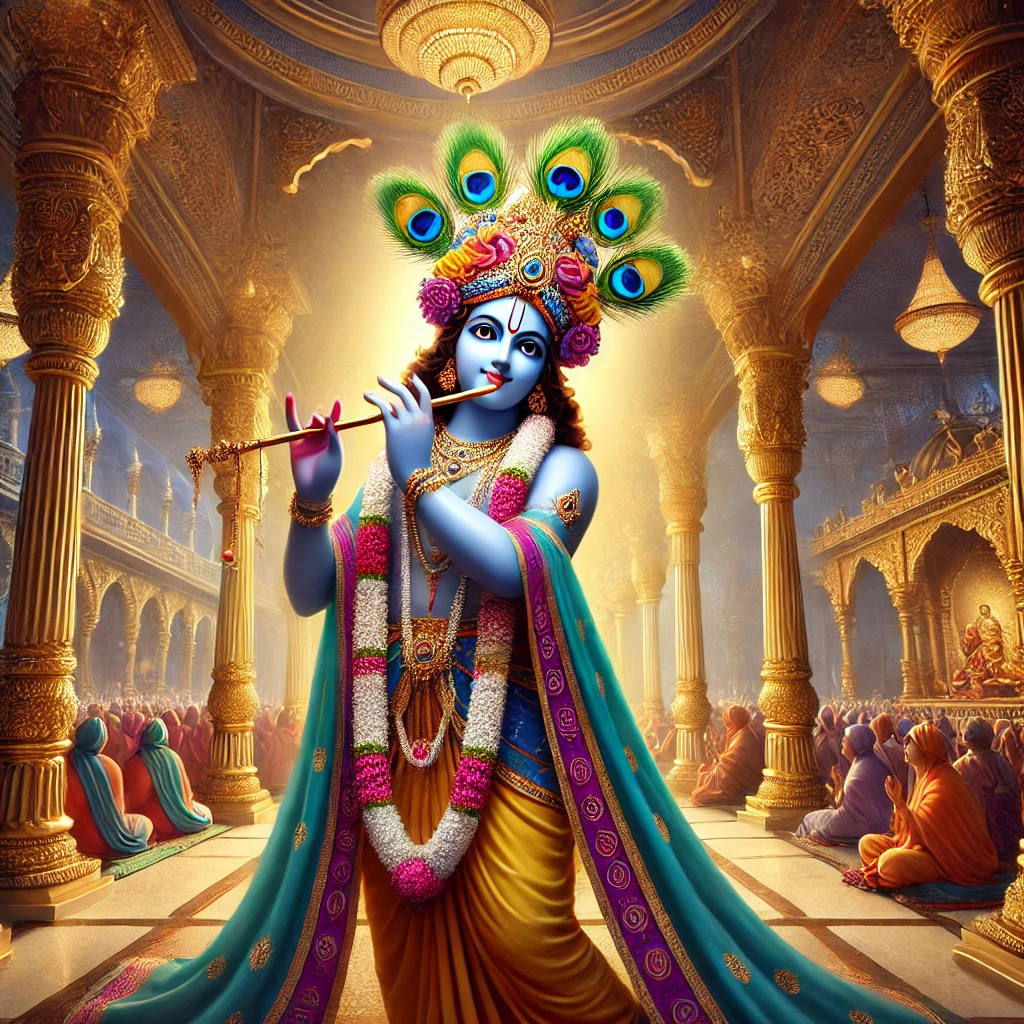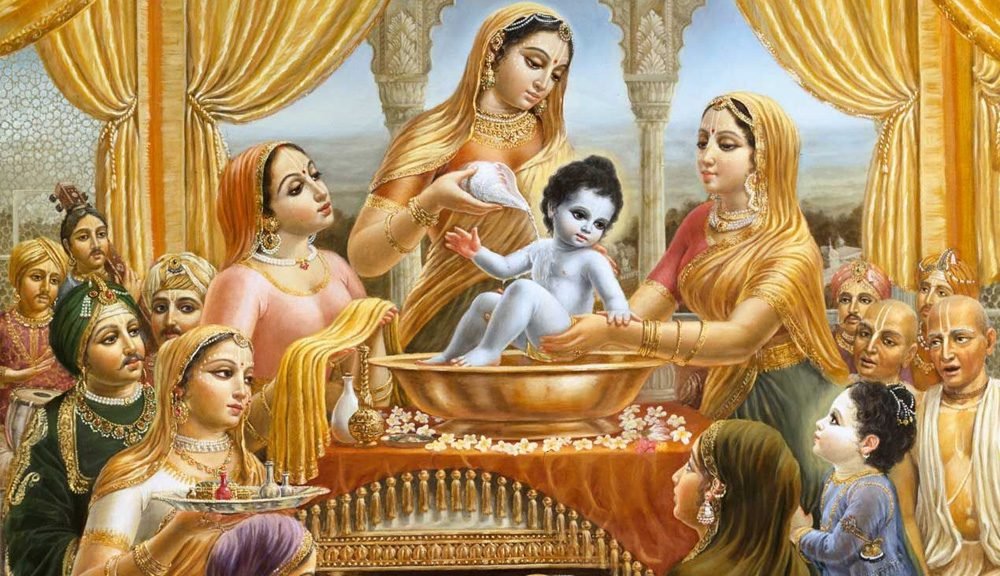The Narasimha Mantra: A Simple Guide to Divine Protection
We live in a world full of stress and problems. But in our Sanatana Dharma, there are ways to find peace and strength. The Lord has created this world and knows all the challenges we, as His children, will face in this world. So, through the scriptures, He has given us tools to handle life’s challenges. One of these tools is a mantra. A mantra is a special chant that helps calm the mind and free it from distress. One such powerful mantra is the Narasimha mantra. It is a prayer to Lord Narasimha, a form of Lord Vishnu, who protects his devotees and fights evil. Let’s explore its story, meaning, and how to use it.
What is a Mantra?
A mantra is a set of words that carries spiritual power. The word “mantra” comes from two parts: “man,” which means mind, and “tra,” which means to free. So, a mantra is something that frees the mind from worry or pain. In Hindu scriptures, mantras are gifts from the Lord to help us face life’s troubles. When we chant them with faith, they connect us to God and bring peace.
Who is Lord Narasimha?
To understand the Narasimha mantra, we need to know the story of Lord Narasimha. Long ago, there was a demon king named Hiranyakashipu. He was very strong and wanted everyone to worship him instead of Lord Vishu. But his son, Prahlada, loved Lord Vishnu and refused to worship his father. This made Hiranyakashipu angry. He tried to kill Prahlada many times—by throwing him off a cliff, into fire, or under elephants—but Prahlada’s faith in Lord Vishnu kept him safe.
Hiranyakashipu had special powers that made him almost impossible to kill. He couldn’t be killed by a man or an animal, indoors or outdoors, during the day or night, or on land, air, or water. But Lord Vishnu found a way. He appeared as Narasimha—half-man, half-lion. This happened at twilight (not day or night), on a doorstep (not inside or outside), and Narasimha put Hiranyakashipu on his lap (not on land or in the air). With his sharp claws, Narasimha killed the demon and saved Prahlada. This story shows that Lord Narasimha protects those who trust in him and destroys evil.
Lessons from Prahlada’s Story
The story of Prahlada and Hiranyakashipu teaches us big lessons:
Trust Saves You: Prahlada faced danger, but his trust in Lord Vishnu kept him safe. When we trust God, we can get through tough times.
Good Beats Evil: Hiranyakashipu was strong, but goodness won in the end. This tells us that doing right is more powerful than doing wrong.
Love Brings Help: Prahlada’s love for God brought Lord Narasimha to save him. If we pray with love, God listens.
Chanting the Narasimha mantra reminds us of these truths and helps us live better.
The Narasimha Mantra Explained
The Narasimha mantra is a prayer to Lord Narasimha.
“Om Ugram Veeram Maha-Vishnum Jvalantam Sarvato Mukham Nrisimham Bheeshanam Bhadram Mrityur-Mrityum Namaamyaham”
These words are in Sanskrit, an ancient language. Each word has a meaning. Let’s break it down:
Om: A holy sound that stands for the universe.
Ugram: Fierce or strong.
Veeram: Brave or heroic.
Maha-Vishnum: The great Lord Vishnu.
Jvalantam: Bright or shining.
Sarvato Mukham: Present everywhere.
Nrisimham: Half-man, half-lion.
Bheeshanam: Scary to evil.
Bhadram: Good or kind.
Mrityur-Mrityum: The end of death.
Namaamyaham: I bow down.
When we say this mantra, we are telling Lord Narasimha: “I bow to you, the fierce and brave Lord Vishnu, who shines brightly, is everywhere, looks half-man and half-lion, scares evil but is kind to us, and helps us overcome death.”
When to Chant
The best time to chant the Narashima mantra is early in the morning, between 4 am and 6 am. This time is called Brahma Muhurat. It’s a quiet time when your mind is calm and clear. When your mind is peaceful, it’s easier to focus on the prayer. This is also when you can feel the blessings of Lord Narashima the most.
How to Chant
Find a Quiet Spot: Sit on a meditation mat in a calm place and face east
Use a Picture: Place a picture of Lord Narashima in front of you. Look at it while you chant. It helps you think about him.
Say It Right: Repeat the mantra carefully. Make sure you say the words correctly. It’s also good to know what the mantra means. This makes your prayer stronger.
Count with Beads: Use a Japa Mala made of Tulsi beads to keep track of your chants. A Japa Mala is a string of beads. Chant the mantra 108 times, or more if you can. Try to increase the number each day.
Benefits of Chanting
Chanting the Narashima mantra can do many wonderful things for you:
Takes Away Fear: It helps you stop feeling scared or worried. You start to feel brave, strong, and full of faith.
Keeps You Safe: The mantra is like a shield. It protects you from bad people or harmful plans, with Lord Narashima watching over you.
Brings Good Energy: It fills your home or workplace with positive feelings. It pushes away bad energy and makes everyone happier and healthier.
Blessings from Lord Narashima: Though he looks fierce, Lord Narashima is gentle and loving to those who pray to him. His blessings bring success and safety.
Do’s:
- Chant with a clean heart and respect.
- Sit still and focus on the words.
- Say it at the same time each day if you can.
Don’ts:
- Don’t rush through it without paying attention.
- Don’t chant if you’re upset or distracted—calm down first.
- Don’t treat it like a game; it’s a serious prayer.
Stories of Lord Narasimha’s Help
Lord Narasimha has helped many people. Here are two true stories:
The Scared Pujari: A Pujari was nervous about serving Lord Narasimha because of his fierce look. One night, he heard a loud noise after locking the temple. Later, in a dream, Lord Narasimha came to him and said, “Don’t be afraid. I’m here to protect you, not scare you.” The Pujari felt peace and kept serving with love.
The Man in Pain: Another person had terrible pain and could hardly move. He stood by Lord Narasimha’s altar and prayed, “Please take this pain away so I can serve you.” Suddenly, the pain left his body, and he felt better.
These stories show that Lord Narasimha is strong but also gentle with those who love him.





